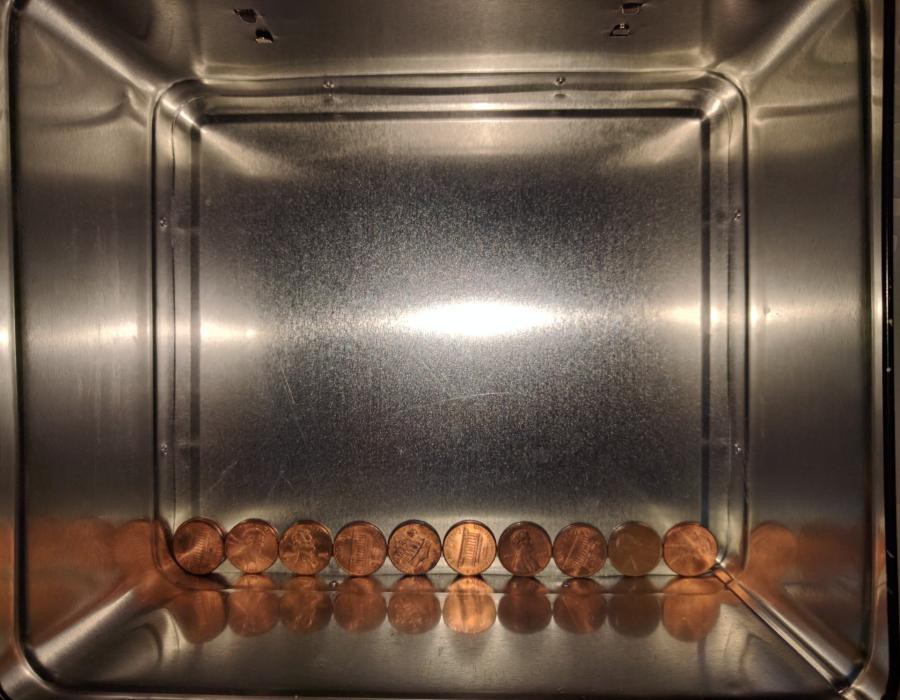The number one goal of this project is to have the battery last as long as humanly possible. My goal is for this computer to be the one you'd want to be stuck with in a post-apocalypse scenario. A computer with a ten-year battery would be totally ridiculous - but in a good way.
As I mentioned in a previous project log, the computer I'm writing this on only runs free software, so I'm not about to taint it by installing Fusion 360 in a VM. Even though I don't have Fusion installed, I have the next best thing: real life. Let's get the "case" (a lunchbox for those of us just tuning in) and see how many 18650s we can put in there.)
I don't even have any 18650s on hand though. (I am a student working on this project with no budget, so skull this project so I can buy some batteries!) My first thought was to 3D print some mock 18650s, but then I realized how stupid that was. I have a jar full of U.S. pennies though, and Wikipedia tells me they are about 19 mm in diameter - just a little bigger than the 18.6 mm max diameter of an 18650. By layering pennies on the bottom of the box (and assuming I have enough vertical space), I can approximate how many batteries I can fit in there:


So let's assume I can cram 80 18650s in there. That's kind of ridiculous - and probably not something I will actually do, even with my fixation on battery life. OK, let's try again, but positioning them horizontally, as if they were in battery holders. An 18650 is 65.0 mm (it's in the name!) or about 3.5 pennies tall. If we have 8 pennies of vertical height, we could fit 10 columns of 2 batteries each, and we're left with lots of room for cooling, extra boards, etc. sort of like the Novena.
I'll discuss why I chose the ESP32 in more detail in a later project log, but for now what you need to know is that it is very power-efficient, especially when positioned as a shitty CPU instead of a great microcontroller. Its low-power modes allow it to go into sleep while staying connected to a Wi-FI AP, and it has a secondary controller that uses even less power - on the order of µA. Assuming the laptop is being actively used 25% of the time (that is, 6 hours a day - a generous estimate), sleeping while connected to an AP 50% of the time, and sleeping until keys are pressed 25% of the time (with no network traffic), a little back-of-the-Wolfram math suggests the battery should last almost ONE AND A HALF YEARS. Holy crap. Of course, this figure will be lower once I account for the e-ink display, keyboard controller, etc., but I no longer think battery life will be such a hard problem...
Discussions
Become a Hackaday.io Member
Create an account to leave a comment. Already have an account? Log In.